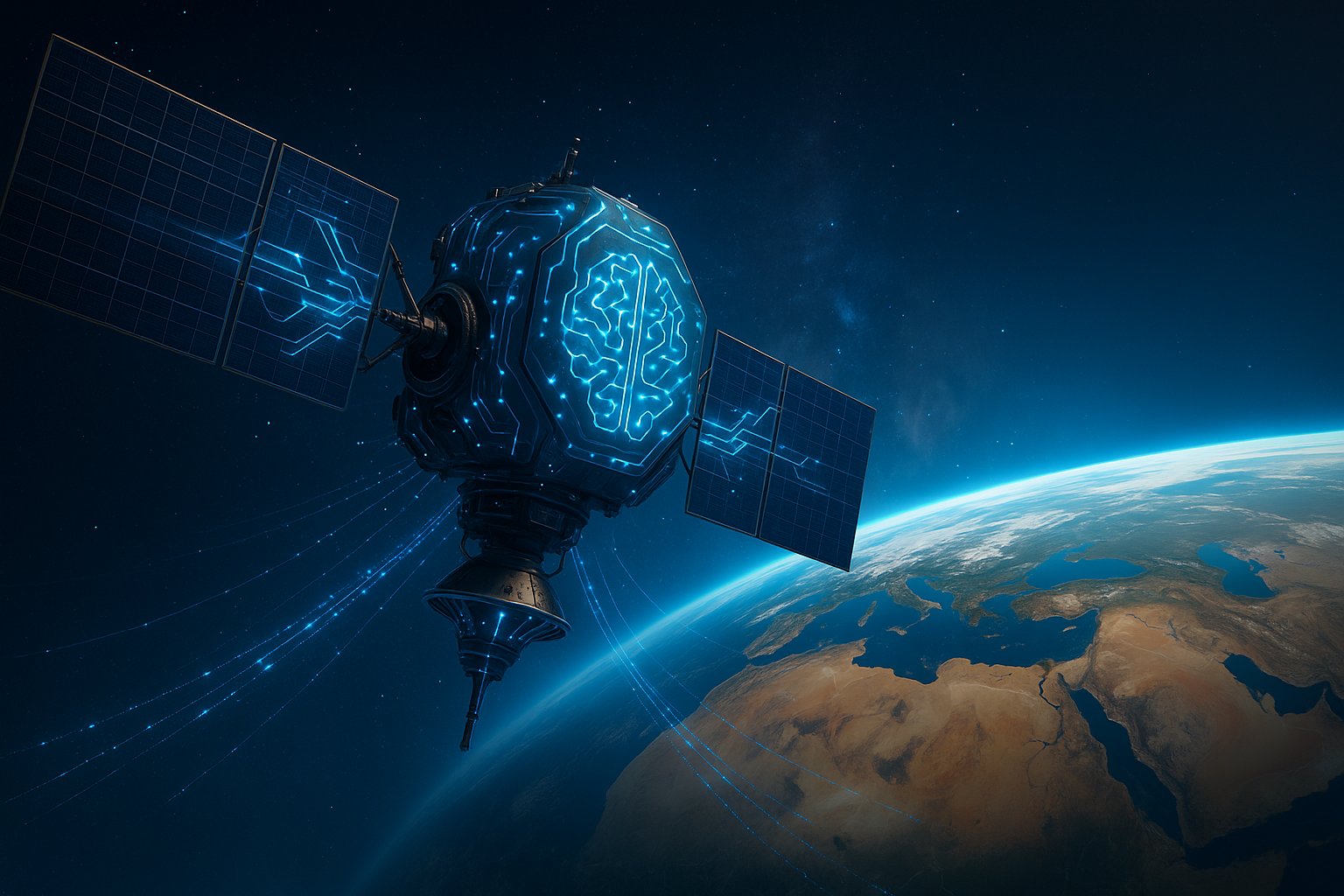
In the vast realm of space exploration, where cosmic wonders often steal the spotlight, a quieter yet equally revolutionary transformation is underway—NASA is embedding artificial intelligence directly into Earth-observing satellites.
This isn’t science fiction. It’s science at its most powerful intersection: space + AI + Earth.
By 2025, NASA is not just launching satellites; it’s teaching them to think—to analyze, adapt, and respond to what they see in real time. These intelligent satellites are set to change the game in how we monitor our planet, from tracking wildfires and hurricanes to understanding climate change at unprecedented depth and scale.
Let’s dive into how this extraordinary shift is unfolding.
🌍 Why Smarter Satellites Are Critical in 2025
Earth observation satellites have long been humanity’s silent sentinels—watching over oceans, ice sheets, forests, and cities, collecting massive volumes of data. But there’s a catch:
Satellites gather more data than scientists can process in real time.
- Thousands of terabytes are beamed back daily.
- Processing often lags behind collection.
- Critical events (wildfires, floods) may go unnoticed in real time.
This is where AI steps in.
Artificial intelligence allows satellites to:
- Prioritize important data
- Make decisions onboard
- Reduce latency
- Send back only what truly matters
It’s not just about smarter satellites—it’s about faster, more focused science.
🤖 How NASA Is Embedding AI into Satellite Missions
NASA is approaching AI integration with extreme precision. Here are the key projects and methods currently shaping their Earth-observing future:
🔬 1. NASA’s “Smart Payloads” with Edge AI
NASA’s Jet Propulsion Laboratory (JPL) is leading the development of edge AI systems for satellites.
“Edge AI” means that the machine learning models are deployed directly on the satellite hardware, rather than relying on ground-based analysis.
✅ What This Enables:
- Onboard anomaly detection (e.g., spotting methane leaks or volcano eruptions)
- Prioritized image capture (e.g., ignoring cloud cover)
- Adaptive re-targeting (e.g., adjusting sensor angles in-flight)
Example Project:
The EO-1 Hyperion mission tested onboard AI that could autonomously decide which images to downlink based on scientific importance—a model for future missions.
🛰️ 2. The SAGE Project (Smart Assessments from Geospatial Earth Data)
SAGE is a real-time AI system being tested on NASA satellites to:
- Analyze environmental changes
- Detect smoke plumes, flooding, and vegetation shifts
- Prioritize disaster zone images for rapid response
This is crucial for supporting emergency services, climate researchers, and environmental agencies.
Imagine a satellite that instantly spots a wildfire, alerts FEMA, and reroutes itself to get a better view—all in seconds.
🌐 3. AI + Satellite Constellations: Collaborative Learning
In 2025, NASA is also exploring how multiple satellites can work together using AI.
Think of it like a constellation of drones in orbit, each sharing intelligence:
- If one satellite detects a signal anomaly, it pings others for confirmation.
- Together, they triangulate and validate phenomena like auroras, pollution events, or storm fronts.
This swarm intelligence model reduces false alarms and increases data accuracy.
🧠 Types of AI Being Used by NASA in Earth Observation
| AI Type | Application |
|---|---|
| Machine Learning (ML) | Classify terrain, predict patterns, detect anomalies |
| Computer Vision | Interpret satellite imagery (e.g., recognize deforestation, ice melt) |
| Deep Learning | Improve weather forecasting, climate modeling |
| Reinforcement Learning | Guide autonomous satellite movement & targeting |
| Natural Language Processing (NLP) | Interpret scientific logs, automate satellite report generation |
Each of these is not just theoretical—they’re being trained, tested, and in some cases, already deployed.
🌪️ Use Cases: Where Smart Satellites Are Making an Impact
NASA’s AI-powered satellite systems are designed to solve real-world problems, not just collect data.
Here are a few key areas of impact:
🔥 1. Wildfire Monitoring & Response
- Satellites detect heat signatures in forests
- AI distinguishes natural fires from controlled burns
- Real-time alerts sent to emergency agencies
Faster detection = faster response = lives and ecosystems saved
🌊 2. Climate Change Research
- AI models track ice sheet retreat with higher accuracy
- Satellites predict sea level rise using terrain + thermal data
- Improved forecasting of El Niño and La Niña events
AI enables early warning systems and long-term planning
🌫️ 3. Air Quality & Pollution Monitoring
- Detect methane leaks from oil and gas sites
- Track pollution movement across cities and borders
- Support global emissions tracking with better resolution
🌧️ 4. Natural Disaster Assessment
- Earthquake aftermath mapping
- Flood zone modeling
- Storm tracking with higher precision
🌍 NASA’s Global Collaboration on AI Research
NASA doesn’t work in a vacuum—its AI research is globally collaborative:
- Works with ESA (European Space Agency) on AI ethics and data governance
- Shares open-source datasets and models for scientific transparency
- Partners with Google, IBM, and NVIDIA for AI hardware acceleration
- Collaborates with NOAA, USGS, and FEMA for joint disaster readiness
🚀 Challenges of Putting AI in Space
Let’s be real—testing AI on Earth is one thing. Launching it into orbit is a whole different challenge.
⚠️ NASA Faces:
- Limited onboard computing power
- Radiation interference with processors
- The need for ultra-efficient, low-latency models
- High cost of satellite deployment = few second chances
That’s why NASA builds robust, lightweight AI models that can operate under extreme constraints—while still making intelligent decisions.
🧭 The Future: Earth Science Meets Artificial Intelligence
NASA’s vision isn’t just smarter satellites—it’s a smarter planet.
In the next 5–10 years, expect:
- AI-integrated weather systems that talk to satellites in real time
- Smart ocean monitoring for marine life conservation
- Global disaster response AI that auto-triages events
- AI-generated Earth “health reports” accessible to scientists, policy-makers, and the public
📌 Final Thoughts: Why This Matters
When we talk about AI, we often focus on business, marketing, or automation. But AI in space? That’s where innovation meets survival.
Climate change, natural disasters, and environmental degradation are challenges we must solve. AI is helping NASA move from observation to action—in orbit and on Earth.
With smart satellites, we’re no longer just watching the planet.
We’re protecting it—with intelligence, precision, and purpose.

